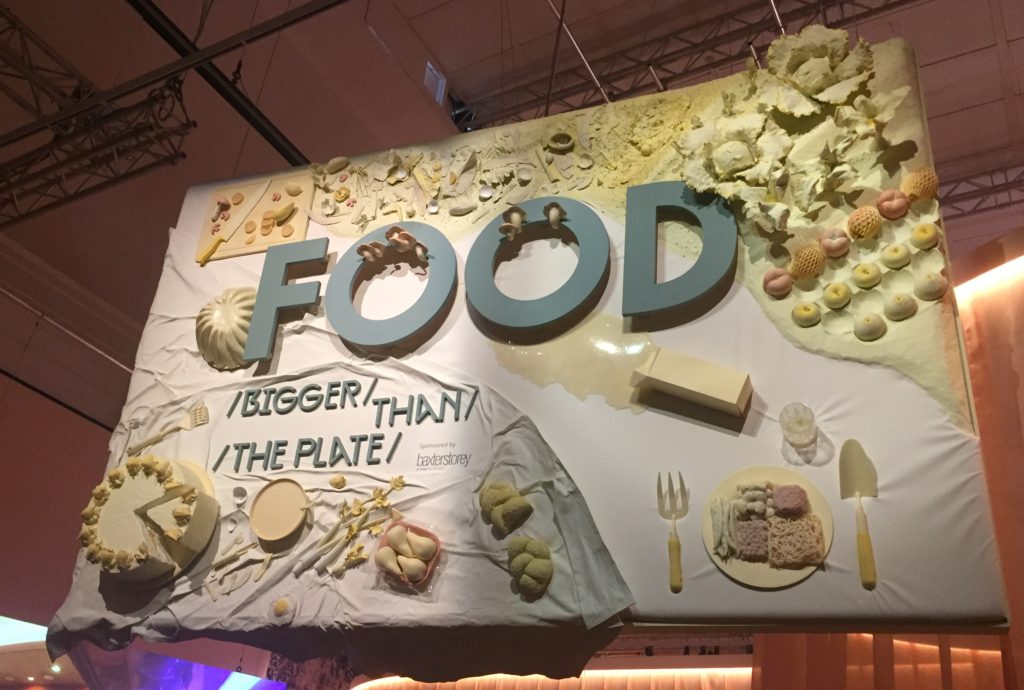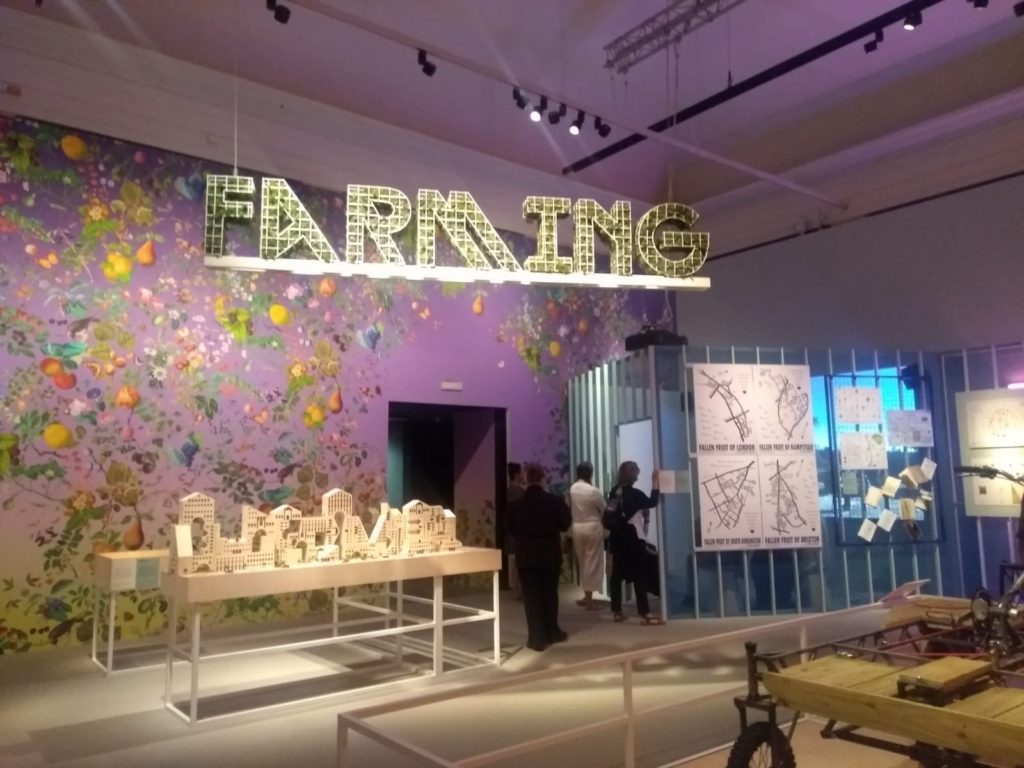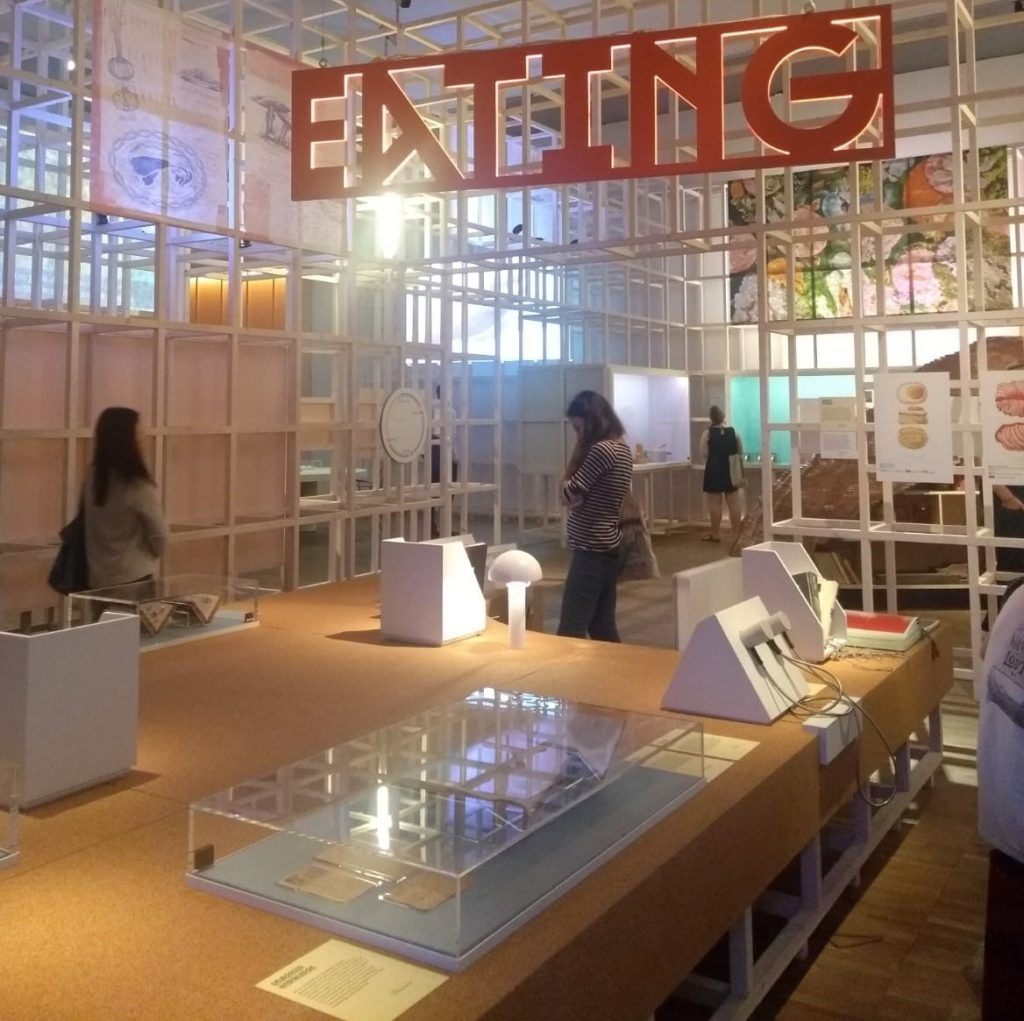
Along with most of the Phipps office, I was initially sceptical about the V&A’s Food exhibition: the prevailing detail in the press had been the cheese grown from bacteria taken from Heston Blumenthal’s pubic hair. However, after reading a series of excellent reviews, I decided to judge for myself.
From the start of the exhibition it is clear that it is about more than just ‘food’: it encompasses the wider picture and the complex issues which are intertwined with systems of nutrition. The exhibition is laid out as a journey through the food cycle, from compost to farming, all the way through to trading and eating. Opening with a section on waste and the life-cycles of food as physical matter, it also incorporates the history and politics of food. One notable example was the case of Jaffa Oranges, and how they went from being a prized Palestinian export in the early 20th century to being re-branded as a success story of Israeli settlement when the State of Israel was established in 1948. FOOD then concludes with an exploration of how food is viewed, marketed and consumed in the modern world, for example through the mode of Instagram.
“From the start of the exhibition it is clear that it is about more than just ‘food’: it encompasses the wider picture and the complex issues which are intertwined with systems of nutrition.”

I was struck by the power of the exhibits to enthrall and to repulse simultaneously. The first thing which confronts visitors on entering is a video loop consisting of a series of clips; there are factories, restaurants, animals in the wild, animals in captivity, close-ups of food, food growing, food being harvested, food decaying. Some of it makes you want to tuck in, some of it makes you nauseous at the thought of eating at all. On reflection, this is arguably an accurate representation of modern attitudes to food; we enjoy and indulge in it, we dine at restaurants, we share it and photograph it, but would often rather not think about its route to our table and the implications of this – for humans, animals and the planet.
“Some of it makes you want to tuck in, some of it makes you nauseous at the thought of eating at all – is this an accurate representation of modern attitudes to food?”
The exhibition functions on a scientific level, considering the practicalities of creating and sustaining a system to nourish the earth’s population, whilst also posing large-scale, conceptual questions. The section on compost and waste demonstrates how beautiful tiling can be created from corn husks, how pineapple leaves form Piñatex, a leather substitute, and pots are even made using urine; an interesting and hopeful display in today’s climate, where reducing waste and plastic use are hot topics of conversation.

The end of the exhibition is more conceptual: visitors are invited to ‘taste their values’ in the Loci Food Lab, an interactive installation which asks users to select their top three qualities in a food chain and produces a miniature menu which is then served. My choice of ‘delicious’, ‘wild’ and ‘resilient’ generated a menu of a chia seed cracker topped with foraged English mushroom spread, crisped Essex barley, sheep’s cheese from Haywards Heath and powdered anchovy. A thought-provoking introduction to ‘bite-sized bioregionalism’, as the lab defines it.
“FOOD is a sensory journey: it provokes and tantalises all five senses whilst also stretching the mind.”

Described as a ‘sensory journey’ on the V&A website, FOOD is just that: it provokes and tantalises all five senses whilst also stretching the mind. It covers scientific aspects of food, political implications of the food chain and the elements of pleasure and luxury which are bound up with eating. All of this is cleverly combined to create a complex, unique and fascinating exhibition which is well worth a visit.